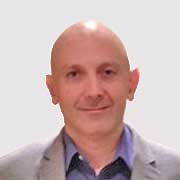Spanish as a modern foreign language: a Latin-American perspective
My journey as a language teaching assistant started in France back in 2009 after receiving a grant to assist Spanish language classes in primary school and high school in the south of the country. It was during my time there that I met my Scottish husband who was the reason behind my moving to Glasgow a couple of years ago
I am originally from El Salvador in Central America, a region that most people might know by its beautiful tropical scenery but also by being one of the most violent on Earth as a result of drug traffic and corruption.
Never in my life before moving to Europe had I given much thought to the nature and variations of the Spanish we speak in Central America; after all, I was not really considering to become a professional ELE teacher and the main reason of moving to France was to possibly specialize in French didactics.
My time as a language assistant was incredibly interesting but also very challenging due to all of the issues that I had to cope with, from colleagues being apprehensive about my accent to students asking if I came from the jungle and if I knew what a computer was. As much as it was hilarious to think about myself as some sort of rain forest Pocahontas speaking a weird foreign tongue, it truly surprised me to find so many misconceptions about Latin America in the European continent. And I must admit that despite the funny side of it all, this situation did make me incredibly self-conscious about my origin and insecure about the way I communicate.
Was I teaching an incorrect type of Spanish? Do I even speak Spanish? I have never even been to Madrid! And what exactly does “tiquismiquis” mean?
When I first started working with my French students, I realized that I was using quite a few words and structures that were a bit different to the ones on their text books so I immediately started doubting myself and feeling stressed. This resulted in an obsession with the Real Academia Española, I was always nervously checking my grammar manual and my dictionary. To my surprise, quite a few of the words that made me hesitate were basically my use of Spanglish which is a result of English being my second language and the very strong influence of American culture in my region; however, some other words or expressions were one hundred per cent right and I was simply using them in a different way.
For example, I was absolutely horrified by the possibility of being forced to use “vosotros” instead of “ustedes”. We never, and I mean NEVER, use “vosotros” in Central America when referring to the second person plural so I felt like a piece of fake leather trying to deny my background or adapt it to made-up rules as to what “normal Spanish” is. We Latin-Americans have indeed adopted quite a few “calcos del inglés” in our Spanish which can be negative or positive depending on how you consider the evolution and dynamics of languages in modern times.
I do believe that it is best to keep the language as standard as possible in class to avoid confusion but this does not mean that we have to deny the fabulous richness and creativity of our mother tongue. This is not what students want. In my experience, students want to feel that they are part of something alive, a language that continues to develop and explore itself every time we open our mouths.
Throughout my whole time as a Spanish tutor in both France and Britain, I have struggled with my linguistic identity. With the aim of keeping a standardized use of the language in the classroom, I have sacrificed parts of my own idiosyncrasy for the sake of normality.
Luckily, things are rapidly changing for the best. My students in Scotland have been truly open and positively curious about my diversity and it is them who have encouraged me to adapt my variations of Spanish into the programs so that instead of hiding it, I use it as part of the social and cultural context of the communicative approach. I am no longer embarrassed of conveying the alternative uses of my language, I am proud that I form part of such a vigorous linguistic world.
I still have a long way to go in terms of my career but I consider myself fortunate for having chosen to be involved in the teaching of modern foreign languages, specifically Spanish. It is a spirited field of study.
This course has definitely been inspirational, it has motivated me to reflect and self-evaluate on every step of my teaching; the structure of it is so well put together that you never feel alone or confused as you progress. I can say that it has really given me a jump start and the confidence to pursue further studies in the methodology and didactics of ELE. My hope is that in the future, I will be qualified enough to include a Central American perspective in the creation of the cultural and linguistic components of the languages framework.



 English
English Español
Español Deutsch
Deutsch Français
Français Italiano
Italiano Ру́сский
Ру́сский 

